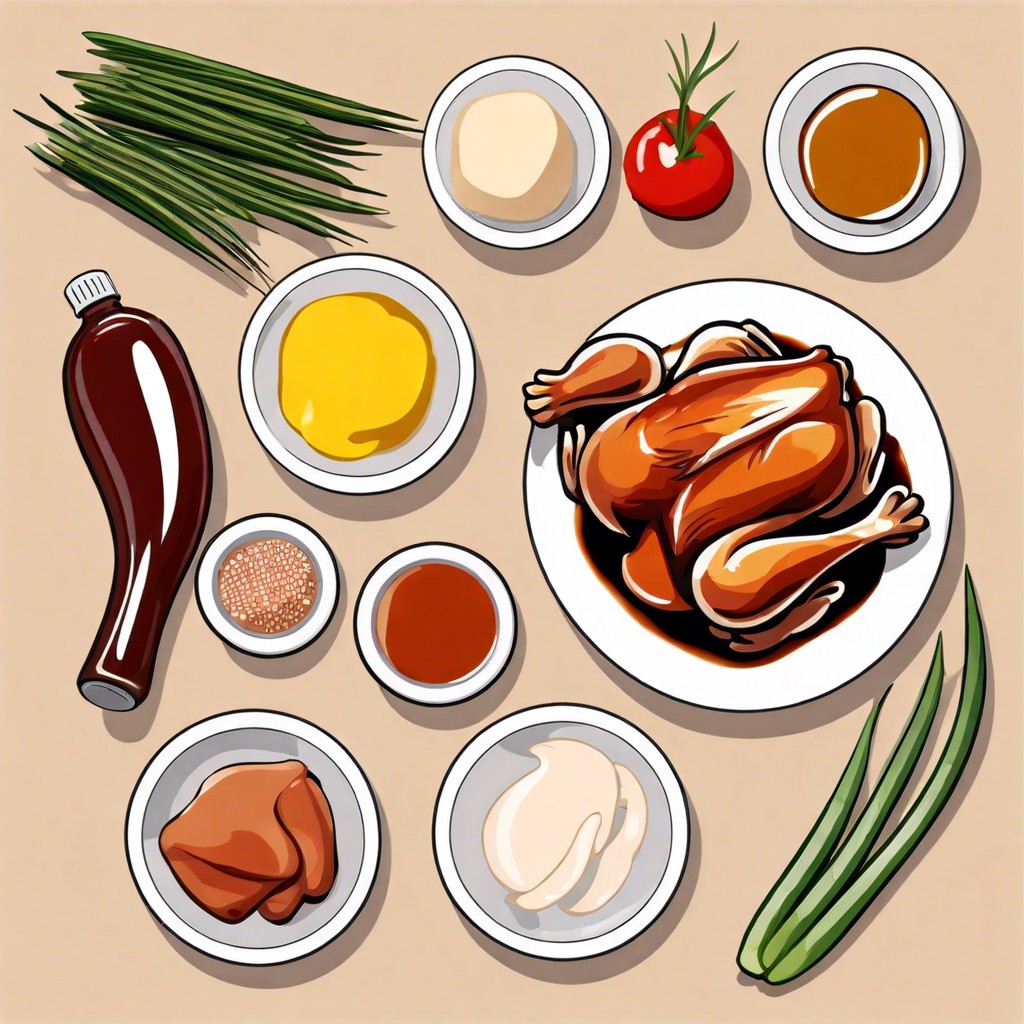Discover the secrets to crafting the perfect BBQ chicken marinade that will infuse your poultry with flavor and tenderness.
Key takeaways:
- Balance acidity with sweet components for flavor and tenderness.
- Customize marinade with spices, herbs, and liquid smoke.
- Properly marinate chicken for at least 30 minutes.
- Understand grilling times and use a meat thermometer.
- Serve BBQ chicken with complementary sides and additional sauces.
Marinade Ingredients

To create a marinade that delivers both flavor and tenderness to your BBQ chicken, start with an acid base such as lemon juice or apple cider vinegar, which will help tenderize the meat. Balance the acidity with a sweet component like brown sugar or honey to encourage caramelization and add a touch of molasses richness. For depth, incorporate aromatics like minced garlic and onion, and consider the savory notes of Worcestershire sauce or soy sauce.
Spices and herbs are the essence of any marinade, adding the signature taste to your chicken. Classics like paprika, black pepper, and cayenne provide heat and smokiness, while thyme and rosemary lend a fragrant herbal profile. Customize your creation with ground mustard for tanginess or cumin for an earthy warmth. For a comprehensive flavor profile, consider including a bit of liquid smoke to emulate the quintessential smokiness of traditional barbecue.
Remember that quality olive oil or another oil of your choice is crucial in the mix, as it helps to transfer flavors onto the chicken and prevents sticking during grilling. The balance of these elements results in a marinade that not only imparts great taste but also complements the natural flavors of the chicken without overpowering it.
Making This Recipe
Select quality chicken, preferably with skin-on to retain moisture and add texture during grilling.
Combine ingredients such as oil, acidic components (vinegar or citrus juice), herbs, and spices to create a balanced marinade that tenderizes and infuses the chicken with flavor.
Ensure proper coverage by immersing the chicken fully or by using a resealable bag to marinate evenly.
Allow the chicken to soak in the marinade for at least 30 minutes, though several hours or overnight enhances the taste significantly.
During marination, refrigerate to prevent bacterial growth.
Prior to grilling, let the chicken come to room temperature to promote even cooking, and remove excess marinade to prevent flare-ups.
Reserve some marinade before contacting raw poultry if you plan on using it to baste while grilling.
GRILLING TIMES FOR CHICKEN
Understanding the proper grilling times for chicken is crucial for achieving both safe consumption and peak flavor. Chicken breasts, due to their size and uniform thickness, typically require 6-8 minutes per side over medium heat. Thighs, legs, and wings, which are denser and have more connective tissue, generally need a longer cooking time—about 10 to 15 minutes per side. It’s important to utilize a meat thermometer to ensure chicken reaches the safe internal temperature of 165°F (74°C), regardless of cut. Direct heat is ideal initially to sear the outside, followed by indirect heat to cook the chicken through without charring. Note that bone-in cuts require additional time compared to boneless. Keep the lid closed as much as possible to maintain a consistent temperature, which aids in even cooking.
How to Make BBQ Chicken
Preheat your grill to a high temperature, around 450-500 degrees Fahrenheit, to establish a good sear on the chicken, sealing in juices. Lower the heat to medium (around 350-400 degrees F) once the chicken is on the grill.
Place the chicken on the grill and cook undisturbed for 5-7 minutes. Look for sear marks and a light charring; this is where the flavor intensifies.
After the initial sear, flip the chicken to grill the other side, allowing the same cooking time.
Once you have a good sear on both sides, reduce the grill’s temperature to low or move the chicken to a cooler part of the grill. Start applying your BBQ sauce in thin layers, allowing each to caramelize for a couple of minutes before adding the next layer.
Avoid over-charring by keeping the lid open at this stage, as it helps in controlling the temperature and prevents sudden flare-ups from the sugary sauce.
Use a meat thermometer to check the chicken’s internal temperature. Aim for 165 degrees Fahrenheit for breasts and 175 degrees Fahrenheit for thighs and drumsticks.
Let the chicken rest off the grill for a few minutes before serving to allow the juices to redistribute, ensuring a moist and tender final product.
Serve
Once your BBQ chicken has reached perfection on the grill, with a beautiful char and delightful smokiness, it’s time to elevate the serving experience. Place the chicken onto a warm platter to ensure it retains its heat.
Accompany with sides that complement the savory flavors, such as creamy coleslaw, a refreshing cucumber salad or a stack of warm cornbread.
For an interactive touch, consider presenting a variety of additional BBQ sauces on the side, allowing guests to personalize their plate. A spritz of fresh lemon juice or a garnish of chopped herbs can add a final burst of flavor, making the dish visually appealing and even more tantalizing to the taste buds.